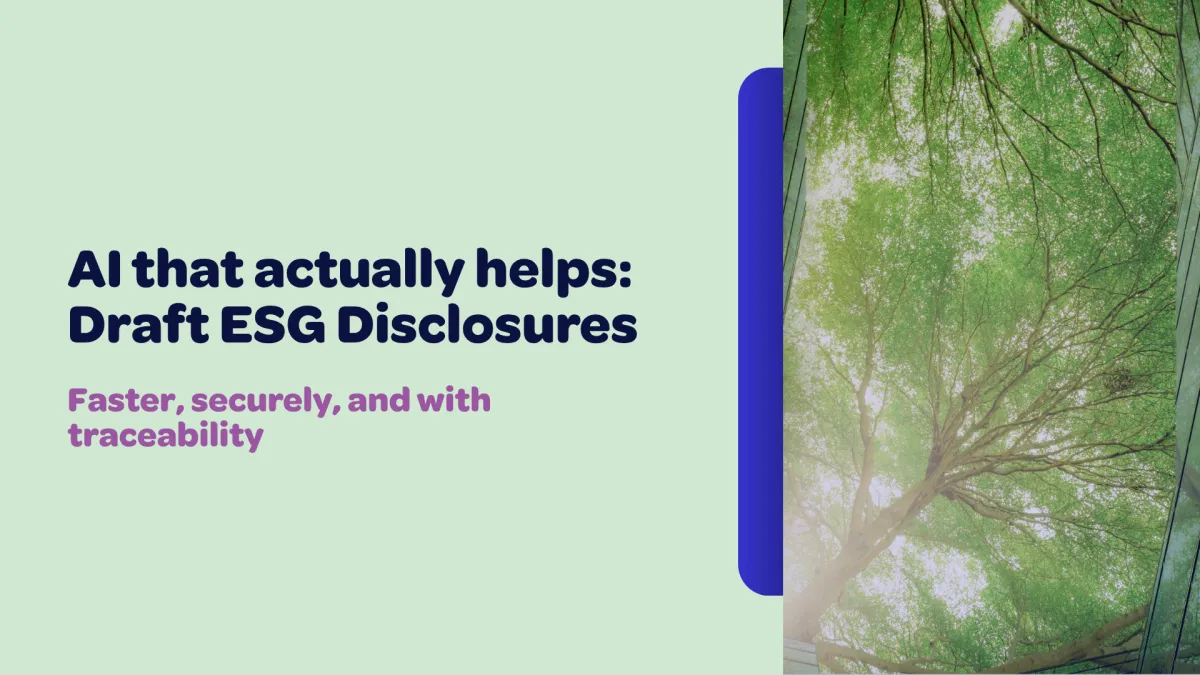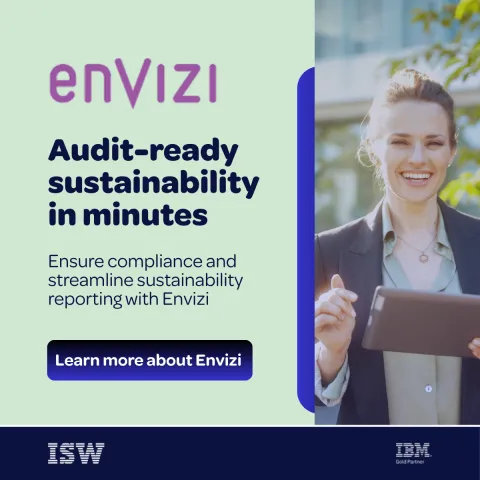
Not all AI features are created equal. But let’s be honest — if your software doesn’t claim to use AI these days, it’s probably not seen as modern, let alone innovative. ESG software is no exception.
We’ve seen a wave of AI-powered tools enter the ESG space. Some are useful. Many are... underwhelming — designed more to say “we use AI” than to actually solve problems.
When IBM Envizi introduced AI-assisted Scope 3 categorisation, it was a good starting point — especially for organisations with massive volumes of spend data that are happy using a spend-based approach. But for most reporting teams, it didn’t fundamentally change the workload. Reporting remained a large and complex undertaking.
Now, that’s shifting.
What’s New
In early 2026, IBM will launch the Envizi Advisor for ESG Response Generation — a new feature designed to simplify the creation of ESG disclosures.
This tool will allow you to:
- Upload existing ESG reports and corporate documentation
- Automatically generate draft responses to disclosure frameworks
- Trace where the data came from, how it was interpreted, and why it was suggested
The best part? It all happens inside your secure environment.
No public LLMs. No third-party data sharing. No model training required.
Why It Matters
This is one of the few ESG AI tools I’ve seen that directly tackles a real pain point:
“How do we write all these disclosure responses — again?”
Whether you’re reporting under ASRS, CSRD, or voluntary frameworks like GRI or CDP, the process is time-consuming, repetitive, and often manual — especially when working from spreadsheets, Word documents, or PDFs scattered across teams.
For New Users
If you’re just getting started with Envizi, this is a smart onboarding bridge.
Your past ESG reports represent a huge investment of time and effort. Sure, you could copy and paste — but it's rarely that simple. Context matters. This feature helps Envizi surface and repurpose that insight quickly and accurately, so you can hit the ground running.
For Existing Users
If you're already using the Sustainability Reporting Manager (SRM), this adds a valuable layer to your process:
- Faster population of responses
- Improved governance and traceability
- Less time spent searching for “what we said last year”
This won’t replace thoughtful sustainability reporting — but it will make the process less tedious and more consistent.
Final Thought
We’re at the point where “AI-powered” is everywhere. What makes this one different is that it actually respects the user.
- It doesn’t try to replace judgment — it supports it.
- It doesn’t scrape your data — it works with the information you already own.
- And it doesn’t make you start from scratch — it helps you move faster.
I’m looking forward to seeing this in action. If you’re building or refining your ESG reporting workflows for 2025–2026, this is a feature worth watching.

Michael Kasteel
Director - ESG & Industry Solutions
